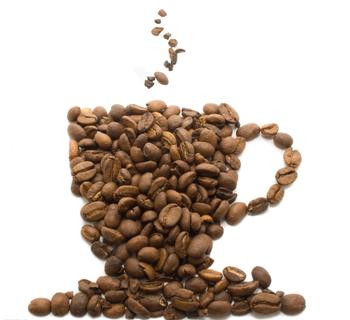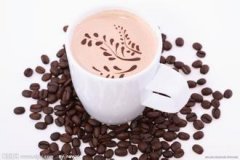A special term for explaining high-quality coffee beans.

Caramelization tester: this is the baking degree index used in the United States. The baking degree is expressed from the shallowest 100 to the deepest 25, meaning (the baking degree is about Agtron50). The determination relies on a special chromatic aberration judgment called Agtron M-Basic.
Arabica species: together with Robsta species and Leiberia species, they are called the three primary species of coffee. Native farming is Ethiopia. It has the best quality among the three original species. It is mainly planted in the highlands.
Unwashed coffee: or (natural), (naturally dried).
Unripe beans: the original meaning is (green), used to refer to immature beans. It has the smell of grass and an uncomfortable smell. The purpose of storing raw beans to dry them is to deal with this practice adopted by mature people.
Water-washed coffee: it means to refine coffee beans by washing. Few impurities and defective beans, high fine system.
Stored beans: in order to remove moisture or let the beans mature, the raw beans are placed in a constant temperature warehouse for a fixed period of time. In this way, it is easier to bake and the coffee tastes more mellow. But generally speaking, both coffee producing and consuming countries believe that this practice will damage the sour taste and aroma of coffee.
Lao Dou: raw beans that have been harvested for more than two years and have low moisture content. Compared to those listed in the same year (new beans), which were not listed until the following year (old beans).
Caffeine: alkaloids in coffee beans, tea, and cocoa beans, which have the same exciting, cardiotonic and diuretic effects as nicotine and morphine. Arabica coffee contains about 1%, robusta coffee contains about 2%, and instant coffee contains about 3% to 6%.
Cup Of Excellence (COE): this is the first boutique coffee review held in Brazil in 1999, and now it is also widely held in Guatemala, Panama, Nicaragua and other countries. According to the strict and impartial evaluation of domestic and international inspectors, (the highest quality coffee) is selected and sold to the world through international auction websites.
Defective beans: defective coffee beans mixed with raw beans, including moldy beans, dead beans, black beans, immature beans, fermented beans and so on. If the defective beans are not hand-picked before and after baking, it will destroy the taste of the coffee.
Colombian fresh and bright coffee: this is one of the four categories of coffee classified by the New York Futures Exchange according to the origin of coffee. It is the general name of coffee from Colombia, Kenya and Tanzania. The other three are water-washed (other fresh and bright lines), non-water-washed (Arabica non-water-washed) and Robusta. The futures trading of coffee is aimed at these four categories.
Leaf disease: a disease susceptible to the leaves of coffee trees in rainy areas. The microbacteria attached to the air holes on the leaf surface took root and were covered with spots. It is highly contagious, resulting in the death of all Arabica coffee grown in Ceylon (today's Sri Lanka) and Indonesia, while switching to the disease-tolerant Robusta variety.
Sieve: a porous sieve used to classify according to the size of raw bean particles. The size of the hole is 1 stroke 64 inches. If you use a 18-size screen, you can sift out beans with a diameter of less than 17,000,000, leaving beans with a diameter of more than 18,000,000. The bigger the screen number, the bigger the bean size.
Boutique coffee: at present, there is no strict definition, and its standards vary according to national boutique coffee associations. Generally speaking, it has an obvious flavor and makes a good impression on people. This is high quality coffee. In the past (old coffee), (platinum coffee) and other high-quality coffee also belong to the category of boutique coffee.
Shelter trees: used to avoid the direct sun of coffee trees, planted in coffee trees, usually bananas or mango trees. In the past, it was also used to disperse the frost and pest hazards of coffee.
Frost damage: coffee damage caused by frost. The first severe frost in 50 years occurred in Parana, Brazil, between 1975 and 1976, resulting in the destruction of 900, 15 million coffee trees. But Brazil, which accounts for 1/3 (25 million bags) of the world's coffee production, once fell to 8.2 million bags, while the price of raw beans on the international market reached an all-time high, rising from about 60 cents per pound to 3.36 cents per pound.
Double baking: as shown in the text, that is, baked twice. During the baking process, the beans are removed from the roaster and cooled before starting the second baking. Double baking has a variety of purposes, which can eliminate uneven drying and flatten the wrinkles of hard beans. This can beautify the surface of the beans, but it will make the coffee taste insipid.
Important Notice :
前街咖啡 FrontStreet Coffee has moved to new addredd:
FrontStreet Coffee Address: 315,Donghua East Road,GuangZhou
Tel:020 38364473
- Prev

Don't drink coffee on an empty stomach.
Doctors remind members of the public not to drink coffee on an empty stomach, because coffee will stimulate gastric acid secretion, especially people with gastric ulcers should be more cautious. Coffee as a drink, when drinking, it should be determined according to the individual situation, generally speaking, in nutrition, it still emphasizes a balanced diet and uses less spicy and stimulating food. In addition, it is worth noting that patients with hypertension should avoid stress at work.
- Next

A brief introduction to roasting degree general knowledge of roasting of boutique coffee beans
Roasting is roughly divided into light (LIGHT), medium (MEDIUM), deep (DARK) and very deep (VERY DARK) roasting, light roasted coffee beans: will have a strong smell, very crisp, high acidity is the main flavor and light mellow. Medium-roasted coffee beans: have a strong mellow, but also retain most of the acidity. Deep-roasted coffee beans: with traces of grease on the surface, sour
Related
- Beginners will see the "Coffee pull flower" guide!
- What is the difference between ice blog purified milk and ordinary milk coffee?
- Why is the Philippines the largest producer of crops in Liberia?
- For coffee extraction, should the fine powder be retained?
- How does extracted espresso fill pressed powder? How much strength does it take to press the powder?
- How to make jasmine cold extract coffee? Is the jasmine + latte good?
- Will this little toy really make the coffee taste better? How does Lily Drip affect coffee extraction?
- Will the action of slapping the filter cup also affect coffee extraction?
- What's the difference between powder-to-water ratio and powder-to-liquid ratio?
- What is the Ethiopian local species? What does it have to do with Heirloom native species?

